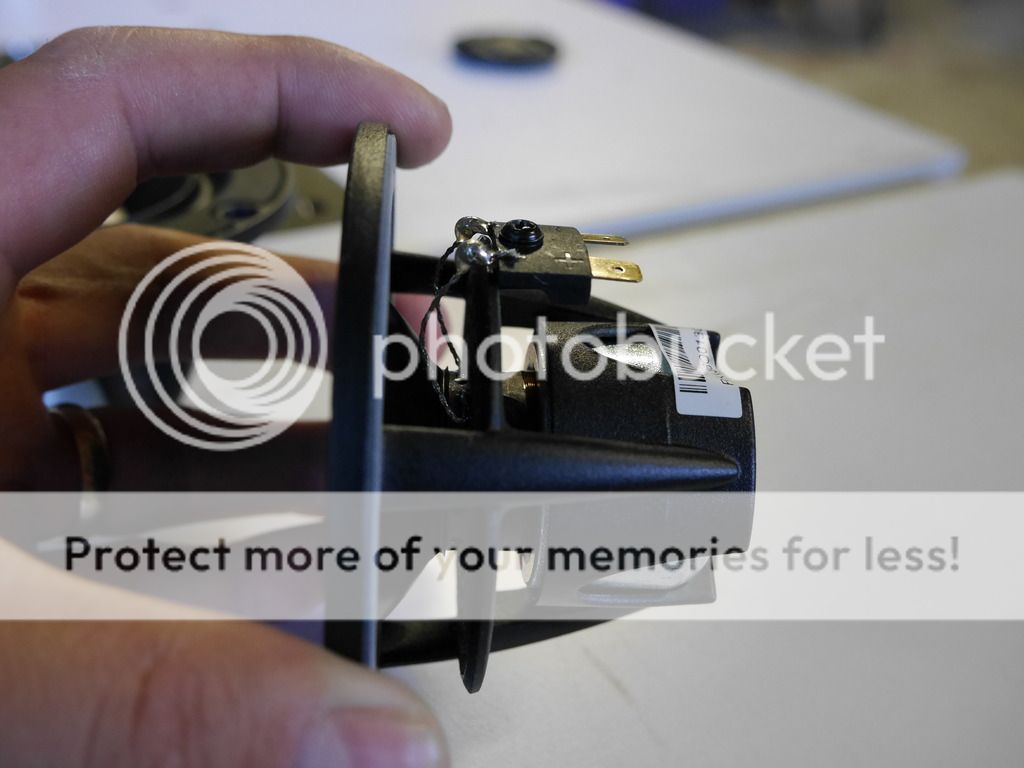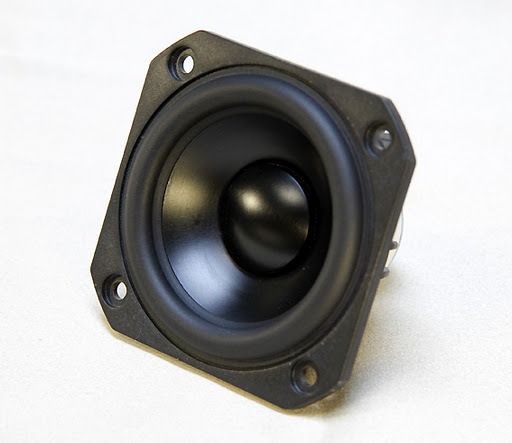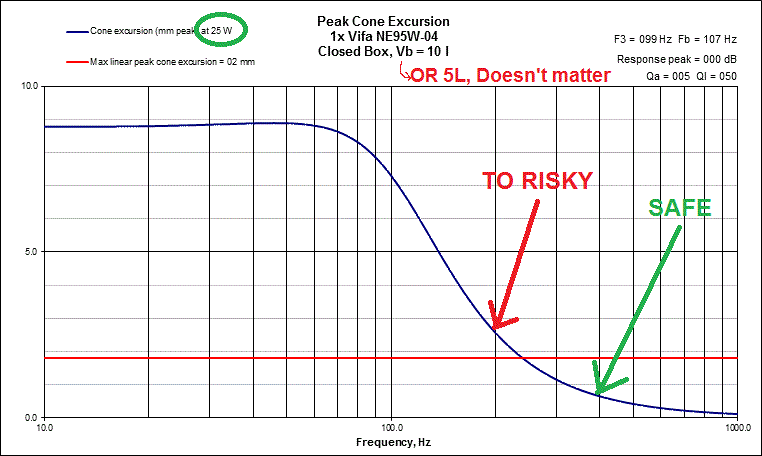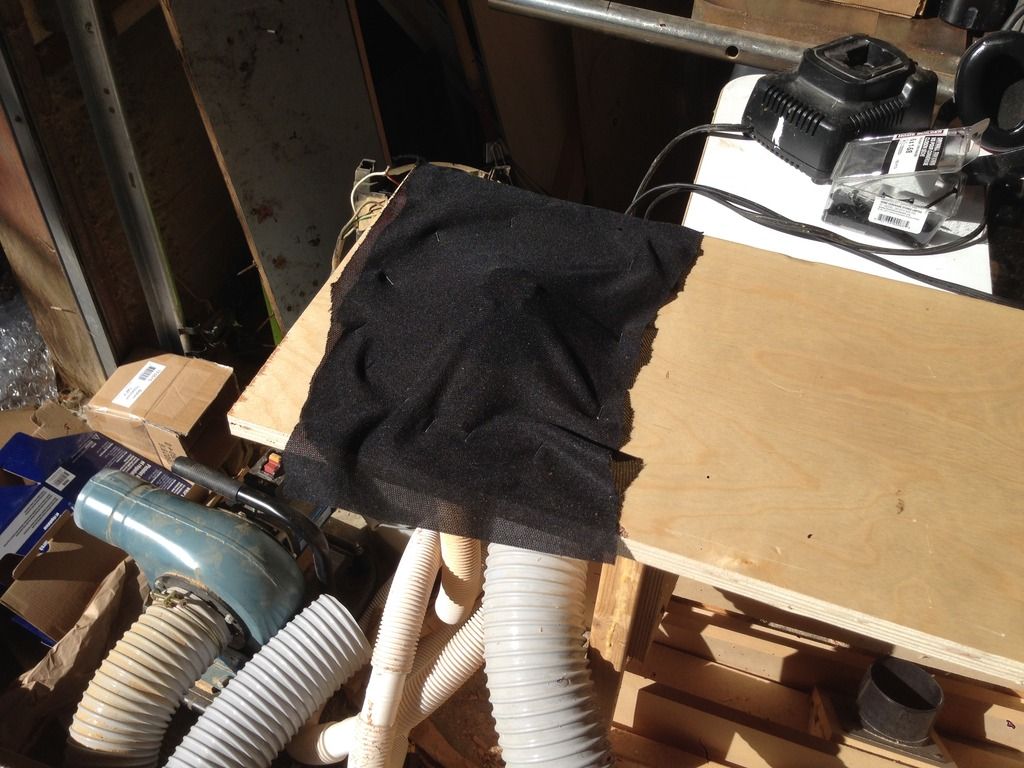Just got these in and I haven't seen much info on them, so figured I'd share my experience. I'll be using them in a FAST. Not sure what woofer yet. Let's have a look.

Surround is inverted and rather large. Cone is quite deep. Neo mag is small compared to the ferrite I'm use to seeing, and the frame is quite open. Cast frame is nice and the way the surround comes up onto the frame is attractive, but the cone luster and dark black doesn't match the matte grey-black of the frame.


If you look close in this next photo, you can see the voice coil barely sticking out of the gap. The spider is exposed on both sides. I image this is a good design for the sake of cooling and breathing (low wind noise) but I'm worried any debris will get in the gap and rub. I'll keep these wrapped in plastic until they're ready to install.

Next I'll make a test baffle and measure these on the weekend. I don't know what woofer I'll use, so I'll use a sheet of plywood for now to get baseline idea of how this stacks up and possibly try them in a random cab I have lying around.

Surround is inverted and rather large. Cone is quite deep. Neo mag is small compared to the ferrite I'm use to seeing, and the frame is quite open. Cast frame is nice and the way the surround comes up onto the frame is attractive, but the cone luster and dark black doesn't match the matte grey-black of the frame.


If you look close in this next photo, you can see the voice coil barely sticking out of the gap. The spider is exposed on both sides. I image this is a good design for the sake of cooling and breathing (low wind noise) but I'm worried any debris will get in the gap and rub. I'll keep these wrapped in plastic until they're ready to install.

Next I'll make a test baffle and measure these on the weekend. I don't know what woofer I'll use, so I'll use a sheet of plywood for now to get baseline idea of how this stacks up and possibly try them in a random cab I have lying around.
This looks like a really well-built driver. The aluminum cone and aluminum dust cap reminds me of the Peerless P830986, which was very highly ranked by listeners in the Blind Comparo Round 2 thread. It had nice highs but rang like bell.
Here is a picture of the 830986 cone and dust cap for comparison:

Looking forward to your measurements and listening impressions.
Here is a picture of the 830986 cone and dust cap for comparison:

Looking forward to your measurements and listening impressions.
I'm glad we're talking about Vifa. Over the years they've rarely come up. It was my understanding Vifa produced the Jordan 4" driver several years ago (but I'm not certain this is correct). If Vifa is making nice full range drivers they need to be on our radar.
Before I get to far ahead of myself, I ran the driver through a couple of box sim programs. I find unibox very convenient.
Seems the driver likes between 5 and 10L with hardly any variation. So it seems tolerant of changes. I'd like to use 5L for the sake of space, but 10L will give more space to absorb reflections inside the box. If I choose a woofer that wants to be floor standing, it may not matter anyways. They'll be big regardless in that case.

I'll cross over around 300 or 400hz. That's a good spot anyways, but this confirms that.
I'll want a woofer that can do very well from 700hz and down, and as small of a box as possible. The CSS LD7 looks nice for that but the data is all gone and it's fairly pricey. The new Dayton Esoteric 7" is also nice, but pricey. I have some Scan speak discovery 9" woofers (can't recall the exact model) that would do nicely, but I am using them in something else. Any suggestions is appreciated.
Seems the driver likes between 5 and 10L with hardly any variation. So it seems tolerant of changes. I'd like to use 5L for the sake of space, but 10L will give more space to absorb reflections inside the box. If I choose a woofer that wants to be floor standing, it may not matter anyways. They'll be big regardless in that case.

I'll cross over around 300 or 400hz. That's a good spot anyways, but this confirms that.
I'll want a woofer that can do very well from 700hz and down, and as small of a box as possible. The CSS LD7 looks nice for that but the data is all gone and it's fairly pricey. The new Dayton Esoteric 7" is also nice, but pricey. I have some Scan speak discovery 9" woofers (can't recall the exact model) that would do nicely, but I am using them in something else. Any suggestions is appreciated.
Any suggestions is appreciated.
I like RS225-8's. Maybe two of them in parallel will give good sensitivity to compensate for baffle step.
I have looked at those pretty closely. I'm not totally sold on them. Maybe the RS270-8. I'm leaning towards the Scan Speak 22W/8534G00 because I have them. I can try them out on this since my other project is being finished and see how it goes. Buy another pair if they work nicely. They like a big box though.
Nearfield

On axis, 30, and 60 degrees

Note the dipole peak is fairly obvious despite my insulation backing. A narrower baffle would push this up higher in frequency which I would do if I planned to do an OB. For now I'm just getting a feel for things.
I'm impressed with the off axis response above 3khz. Seems even and uniform until the break up above 8khz. It's total chaos near 20khz. All in all I'm happy with the result and a 12" baffle (closed box) seems promising. I may shoot for a 10" if I use the 22w/8534 woofers, which I think I will.

On axis, 30, and 60 degrees

Note the dipole peak is fairly obvious despite my insulation backing. A narrower baffle would push this up higher in frequency which I would do if I planned to do an OB. For now I'm just getting a feel for things.
I'm impressed with the off axis response above 3khz. Seems even and uniform until the break up above 8khz. It's total chaos near 20khz. All in all I'm happy with the result and a 12" baffle (closed box) seems promising. I may shoot for a 10" if I use the 22w/8534 woofers, which I think I will.
Looks very nice. I noticed that this has a huge resemblance to the P830986 which also has a zinger at 20kHz. What does the IR look like - a huge ringing train at 20k I bet.
I'm buying sound easy in July and I'll get CSD then. It's very hard for the layman to read an IR. This one is very ringy though.
Listening to the sweep was good. It actually had a decent top end. If it's a hot mess of distortion I'll XO to a tweeter and make a 3 way. I have some tweeters that need to be used up anyways 🙂
Listening to the sweep was good. It actually had a decent top end. If it's a hot mess of distortion I'll XO to a tweeter and make a 3 way. I have some tweeters that need to be used up anyways 🙂
I've measured these, top end is free of major non linear distortion. Bottom end NLD starts to blow up at higher volumes, i'd probably cross around 500hz. http://tinyurl.com/lmqoe4r
Before I get to far ahead of myself, I ran the driver through a couple of box sim programs. I find unibox very convenient.
Seems the driver likes between 5 and 10L with hardly any variation. So it seems tolerant of changes. I'd like to use 5L for the sake of space, but 10L will give more space to absorb reflections inside the box. If I choose a woofer that wants to be floor standing, it may not matter anyways. They'll be big regardless in that case.

Hi,
Your miles out with the box volume for a 3" driver with a Vas of around 1L.
Anything above 2L will make very little difference, 3L max.
Used in a FAST the bass alignment doesn't matter.
rgds, sreten.
http://www.parts-express.com/pedocs/specs/264-1058--tymphany-ne95w-04-spec-sheet.pdf
TBH the top octave looks an irredeemable mess.
Last edited:
Sreten, the reasoning for using a large box is to minimize internal reflections. I hinted at that previously, but didn't fully explain myself. It also (slightly) keeps the impedance peak lower in frequency, making passive XO design a little easier. I'm not worried about the bump in the response from a small box, as that will be pushed down with the XO filter. Perhaps you didn't model the driver? It's very high q.
The top end may be a mess if I want perfection and hear like a dog. I haven't discounted making it a 3 way (also hinted at). I have lots of tweeters to use.
TMM: I'm surprised you think 400hz is to low. I was even thinking 300hz. It has a large surround and spider. I won't be pushing lots of power into these as the woofers will also run out of excursion fairly quickly. I'm sure I'll try lots of configurations of XO'ers before I settle on something I like.
The top end may be a mess if I want perfection and hear like a dog. I haven't discounted making it a 3 way (also hinted at). I have lots of tweeters to use.
TMM: I'm surprised you think 400hz is to low. I was even thinking 300hz. It has a large surround and spider. I won't be pushing lots of power into these as the woofers will also run out of excursion fairly quickly. I'm sure I'll try lots of configurations of XO'ers before I settle on something I like.
Errr... a larger box will make internal reflections harder to control. Larger the dimension, more the insulation required to absorb the internal standing waves. The insulation thickness on each wall should be about 1/5th the largest dimension of the box. So, if you have a 36" tall box, you'd need about 7" of insulation (batt) to absorb the internal reflections.
http://www.diyaudio.com/forums/multi-way/215133-box-colourations-really-22.html#post3086482
Also, thanks for the measurement. Can you measure in a closed box? Or maybe do a nearfield/farfield splice so that we may see the full response? Thanks!
http://www.diyaudio.com/forums/multi-way/215133-box-colourations-really-22.html#post3086482
Also, thanks for the measurement. Can you measure in a closed box? Or maybe do a nearfield/farfield splice so that we may see the full response? Thanks!
Last edited:
Sreten, the reasoning for using a large box is to minimize internal reflections. I hinted at that previously, but didn't fully explain myself. It also (slightly) keeps the impedance peak lower in frequency, making passive XO design a little easier. I'm not worried about the bump in the response from a small box, as that will be pushed down with the XO filter. Perhaps you didn't model the driver? It's very high q.
Hi,
Its not high Q like many 3" that are 0.8 to 1.0 Qts. Being near
0.7 Qts box programs will suggest large volumes as optimum.
Rear volume doesn't really affect internal standing waves,
unless its set up as a TL, otherwise the higher modes of
of a small enclosure are just as well damped as larger.
YMMV but a 1L Vas driver is best loaded by about 2L rear.
A triangular section is a good idea, in the top of a FAST.
rgds, sreten.
ra7, that seems counter intuitive to me, but I'll read your link and make a jundgement. Seems a larger box would allow more stuffing and absorption. If the internal box surfaces are close to the rear of the cone then how do you stop them? Besides, I don't see a problem with 7" of insulation in a 36" box. Just think how easy it is to control reflections in an infinite baffle... But I'll read the link. Thanks.
More detailed measurements will be coming once I'm further into the project. This was just to tell me vaguely what I've got. If they were even worth pursuing. I think they are at this point. Check back later and I'll have more.
More detailed measurements will be coming once I'm further into the project. This was just to tell me vaguely what I've got. If they were even worth pursuing. I think they are at this point. Check back later and I'll have more.
Being near
0.7 Qts box programs will suggest large volumes as optimum.
I don't use their suggestions.
I'm surprised by the sudden interest in my box size. Can anyone tell me a negative to using a large box? Other than WAF I suppose. 5 to 10L is really not that big on top of a tower. My tower will be close to 12" wide and 12" deep anyways, so even if I make the FR chamber 4" tall that's a lot of volume right there. Not really a convenient way to make it smaller actually. 🙄
Errr... a larger box will make internal reflections harder to control.
I think you need to reconsider what speakerdave is saying and what I'm trying to achieve. 😉
The smaller box increases the frequency of the first resonance higher into the bandwidth of my driver and provides less space to absorb it.
- Home
- Loudspeakers
- Full Range
- Vifa (Tymphany) NE95W-04 review and testing



